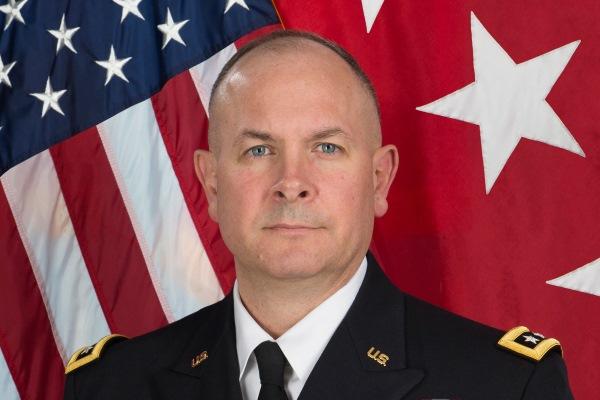The head of the Army National Guard is looking to see if training one weekend a month and two weeks in the summer is enough to ensure Guard troops are ready for future fights.
Army Lt. Gen. Timothy Kadavy, who took over as director for the Army National Guard in March, is assessing the readiness needs of the Guard at the request of Army Chief of Staff Gen. Mark Milley.
"The chief of staff has challenged our current thoughts on training and readiness," Kadavy told an audience at a Nov. 18 Institute of Land Warfare breakfast sponsored by the Association of the United States Army.
As part of the assessment, Kadavy is examining if the current minimum of 39 annual training days is the right number to maintain readiness. That minimum number of training days, he said, was established in the 1900s and may no longer be relevant.
Kadavy will also determine if Guard units are getting the right number of annual rotations to the Army's Combat Training Centers.
"Everything we do must be looked at through the lens of readiness," Kadavy said. "Do we need to rethink how we use the Reserve component of today's Army?"
Kadavy also said he is considering ways to ensure that the training Guard units do takes advantage of the lessons that were learned when units were routinely mobilizing and deploying to Iraq or Afghanistan.
"My concern is if we don't continue to do that at some level, we will lose that muscle memory for any reduced mobilization period by almost 50 percent for certain types of units and capabilities," he said. "We need to continue to exercise to some degree those lessons learned and learn new lessons and continue to progress."
Under the Army's rotational readiness model a portion of our National Guard is always available for combat missions, for support to civil authorities, humanitarian assistance and theater security.
But the Army will need to continue to keep Guard units equipped at the level they were they were regularly deploying alongside active units, Kadavy said.
"We are the benefactors of a tremendous investment in equipment by the Army and by Congress in support of operations over the last 15 years,"he said. "But modernization is fleeting."
Kadavy recently met with commanders of the Guard’s seven armored brigade combat teams.
Commanders are concerned that "because of the decrease in mobilizations and the opportunities to modernize because of mobilization, there is this ever-growing gap that they see between their active component brothers in ABCTs and where they are today."
"There must be a strategy to help us maintain our equipment and our interoperability within the Army," Kadavy said.
"I liken it to an example of digital and analog -- the two don’t work together. And if you have one component in a digital world and one component in an analog world, how do you talk to each other and how do you operate effectively as a team on the battlefield?
"Readiness should be looked at as a measure of investment and not simply as a measurement of cost."
--Matthew Cox can be reached at matthew.cox@military.com.






























